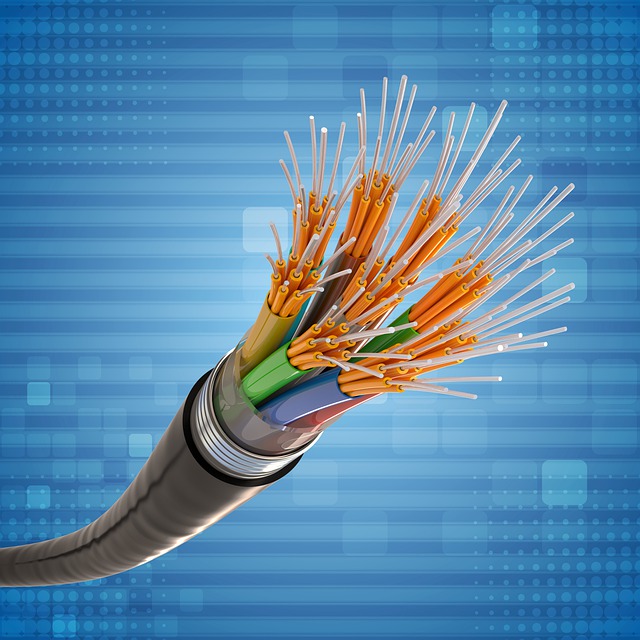When you're comparing different internet providers in your area, you're likely looking at available speeds, pricing, data caps, and equipment fees. Another important factor that is sometimes overlooked is the connection type – essentially, the technology that your internet service provider uses to bring the internet to your home. At CNET, we have experienced all types of connection types firsthand and can attest to the impact they can have.
ISPs utilize either wired or wireless connections, or sometimes a combination of both. Wired connections involve fiber-optic, coaxial cable, and copper (DSL) internet where a wire is directly connected to your home. On the other hand, wireless options include satellite internet, fixed wireless, and the increasingly popular 5G home internet.
The article provides information on different types of internet connections, explaining how they function and detailing their limitations. The connection types are presented in a recommended order from most to least preferable.
Fiber internet: The most superior option, yet not widely accessible
Fiber-optic internet transmits data using long, thin strands of glass or plastic as light signals, resulting in faster and more reliable connections compared to other types.
Fiber-optic internet can provide super-fast download speeds up to 10 gigabits (10,000 megabits per second) or even higher. This means you can download a 2-hour HD movie in less than a minute. However, most fiber-optic providers typically offer download speeds ranging from 1,000 to 5,000Mbps.
– Upload speeds play a crucial role when it comes to activities like working from home, learning online, sharing videos on social media, and gaming. Fiber-optic internet offers significantly faster upload speeds compared to other types of connections, with upload speeds matching download speeds.
The faster ultraspeedy plans can cost around $100 or more each month, but providers also offer slower speed options for $40 to $90 per month. Depending on the providers in your area, other types of connections may have slightly lower initial prices, but overall, fiber internet will likely give you the best value considering the speeds you receive for the price you pay.
Availability presents a challenge for fiber internet. Extending fiber-optic cables to cover entire cities and regions is a massive logistical task. There is intense competition and bureaucratic obstacles to overcome, making it difficult for major service providers to extend coverage to underserved areas. As a result, fiber internet is accessible to only about 40% of households in the US, mainly those located in urban areas, as reported by the Federal Communications Commission.
Noteworthy Fiber Internet Providers
<span><p>Internet provided through cable transmits data to your residence using a copper coaxial cable, similar to how traditional cable television functions.</p></span>
Cable internet uses copper coaxial cable to bring a connection to your home, similar to traditional cable television.
Taylor Martin/CNET
Cable internet: The typical connection
Cable internet may not offer the same speed and reliability as fiber-optic service, but it is more available to users. Cable is a popular choice for internet connections, reaching almost 90% of households in the US, often bundled with TV services as it uses the same coaxial connections.
Cable internet service, while not as fast as fiber internet, offers high-speed connections, with most providers offering various speed options, including a gigabit plan with download speeds up to 940Mbps. However, upload speeds are typically lower, with few providers offering speeds above 50Mbps. Cable internet can suffer from speed reliability issues due to network congestion, leading to slower speeds, especially during peak times.
Cable internet prices differ among providers, but cable is generally one of the more cost-effective types of internet connections available. Providers like Astound, Mediacom, and Xfinity offer broadband starting at approximately $30 per month or lower. Spectrum, another major player in cable internet, begins at around $40 per month but offers maximum download speeds of 300Mbps.
Top Cable Internet Providers
—
This compact Netgear Nighthawk portable router captures a 5G signal and transmits it as a Wi-Fi network for nearby devices to connect to the internet. By linking it to a dedicated Wi-Fi router, you can extend the coverage area.
This compact Netgear Nighthawk mobile router captures a 5G signal and transmits it as a Wi-Fi network for nearby devices to connect to the internet. When connected to a dedicated Wi-Fi router, the coverage area can be extended.
Netgear
The Rise of 5G Home Internet: An Increasing Wireless Option
Mobile internet, originally intended for phones, is gradually becoming more suitable for home internet use with advancements in technology leading to faster speeds.
With this type of internet connection, a cell carrier like T-Mobile or Verizon transmits 5G signals in all directions. Many cellphones catch these signals, but for home internet, a router catches them and transforms them into a home connection. This is a convenient method to obtain broadband without the hassle of installing a line to your home or dealing with the often dissatisfying services from ISPs.
T-Mobile
T-Mobile
Verizon
Verizon
If you reside in a city with a strong cellular network, you might have access to 5G connectivity from providers such as Verizon, which can offer speeds up to 1Gbps. There are also cellular internet options available that utilize LTE technology, the previous generation, or a combination of LTE and 5G.
Verizon and other providers offer internet speeds of up to 1Gbps.
Verizon and similar providers offer speeds reaching up to 1Gbps.
When searching for mobile internet options for home use, you may find yourself with limited plan choices that offer a fixed rate based on the available speeds at your location. T-Mobile provides a single 5G plan priced at $60 per month, offering download speeds between 72 to 245Mbps. In comparison, Verizon offers two plans priced at $50 or $70 per month, with download speeds ranging from 50 to 300Mbps or 85 to 1,000Mbps, respectively.
Notable cellular internet providers
Fixed wireless internet: Also wireless, but with a few conditions attached
Fixed wireless is another option for wireless internet, but it may require more steps and equipment compared to other options. It offers slower speeds and less data. Providers of fixed wireless send internet signals through the air, just like 5G. However, to receive these signals, you will need a mounted receiver that has a direct line of sight to the nearest tower. Nearby obstacles like hills, trees, or buildings can interfere with or block your connection.
Fixed wireless internet speeds usually range from 5 to 50Mbps. Several factors can impact the signal quality, such as the distance from a nearby tower, so the speeds available to you may vary. Regardless of the speed, you can typically expect a flat-rate price of around $50 per month. Plans often include a monthly data cap of 200 to 300GB, depending on the provider.
Fixed wireless internet has typically been more common in rural areas, but it is now expanding quickly in urban areas thanks to providers like Google Fiber and Starry Internet. Instead of sending services directly to individual homes, these providers transmit internet signals to entire buildings, like apartment complexes, and then connect individual units using an Ethernet cable. These providers can offer much faster speeds compared to traditional fixed wireless services, with gigabit speeds being available in certain areas.
Top Fixed Wireless Internet Providers
—
DSL internet: An alternative before satellite technology occurs.
DSL, short for digital subscriber line, is a type of fixed connection commonly used in areas where cable or fiber internet is not available. This technology utilizes copper phone lines to establish an internet connection, similar to dial-up but faster and without tying up the phone line.
DSL internet is a good option for people living in rural areas who want a relatively reliable and affordable internet connection. While it may not be as fast as other types of internet, DSL is often cheaper and sometimes quicker than satellite internet. Because DSL uses existing phone lines for service, it is widely available and providers can offer competitive prices.
List of important DSL internet providers
The connection with satellite internet is established through radio-equipped satellites orbiting Earth. A dish is required to receive the signal.
Satellite internet functions by connecting through radio-equipped satellites orbiting Earth. Users will need a dish to capture and use the signal.
<span>Eric Mack/CNET</span>
Satellite internet: An option when no other alternatives are available
Satellite internet is widely available because it relies on satellites overhead rather than ground infrastructure like cables or cell towers. By using a mounted dish to connect to these geostationary satellites, you can usually get service if you have a clear view of the southern sky and are willing to pay for installation.
Today's satellite internet providers typically offer speeds ranging from 12 to 100Mbps, which is suitable for smaller households looking to stream video, browse the internet, and stay connected on social media.
New providers of satellite internet, such as Elon Musk's Starlink network and Amazon's Project Kuiper, are planning to increase internet speeds. They achieve this by using satellites in low Earth orbit, which reduces the distance the signal needs to travel. This also results in lower latency or lag.
Elon Musk's Starlink network
Elon Musk's Starlink network
<span><span>expanding service</span></span>
Enhanced service
<span>ensuring faster speeds</span>
pledging to increase those speeds
Increased competition in the satellite internet industry may lead to lower costs for consumers. Currently, satellite internet is the priciest type of internet connection available. Basic plans start at around $60 per month, but these usually offer slow speeds and limited data. For faster speeds or more data, satellite internet prices can quickly rise to $150 to $200 per month, plus an additional $15 for equipment fees.
Top Satellite Internet Providers
Choosing the appropriate internet service for your needs
Which type of internet connection is the best fit for you? This will depend on various factors. The first consideration is your typical usage and the actual speed you require. If you mainly use the internet for browsing and emails, a slower connection may be sufficient. However, households with multiple users who stream videos, play online games, or upload files for work or school will benefit from having access to download speeds of at least 100Mbps.
Determining the Required Internet Speed
Determining the amount of speed required
Costs are an important factor to consider. Some providers offer bundled services at a discount, but keep in mind that the initial promotional pricing may only be for a limited time. This means that in the second year, for example, you might end up paying more for the same service.
Bundle their various services together to provide you with a discount
Package their various services together to provide you with a discount
In the end, the primary determining factor is most likely out of your hands, and that's where you are located. Some areas in the US offer numerous options for internet access, while others have very limited choices.
<p>To prepare yourself for any potential choices, it is beneficial to have an understanding of the various technologies involved so that you can anticipate what lies ahead before making a commitment.</p>
Frequently Asked Questions about Internet Connection Types
Is Wi-Fi a type of internet?
Wi-Fi allows you to connect to the internet wirelessly through a router that sends out signals throughout your home. This is particularly useful for devices connecting to cable internet service.
How can I determine the type of internet connection I have?
Wireless connections can be easily identified by having a satellite dish or antenna for satellite or fixed wireless service, or by using Verizon 5G Home Internet or T-Mobile Home Internet as the provider.
Determining the type of wired connection you have can be challenging, but conducting a speed test can help. If the upload and download speeds are similar, it likely indicates a fiber connection. On the other hand, if the download speed is over 100Mbps, especially between 200 to 940Mbps, but the upload speed is significantly lower, it suggests cable internet service.
If your internet speed test reveals download speeds of around 100Mbps or lower, you may be using cable or DSL internet. To confirm, just check the back of your modem – a coaxial cable indicates cable internet, while a telephone line indicates a DSL connection.
What qualifies as broadband?
The FCC has recently raised the broadband speed requirements to 100Mbps for downloads and 20Mbps for uploads. This change means that DSL services, often below these speeds, no longer qualify as broadband. While satellite internet can reach 100Mbps download speeds, the 20Mbps upload speed falls short of the new broadband definition in many cases.


























